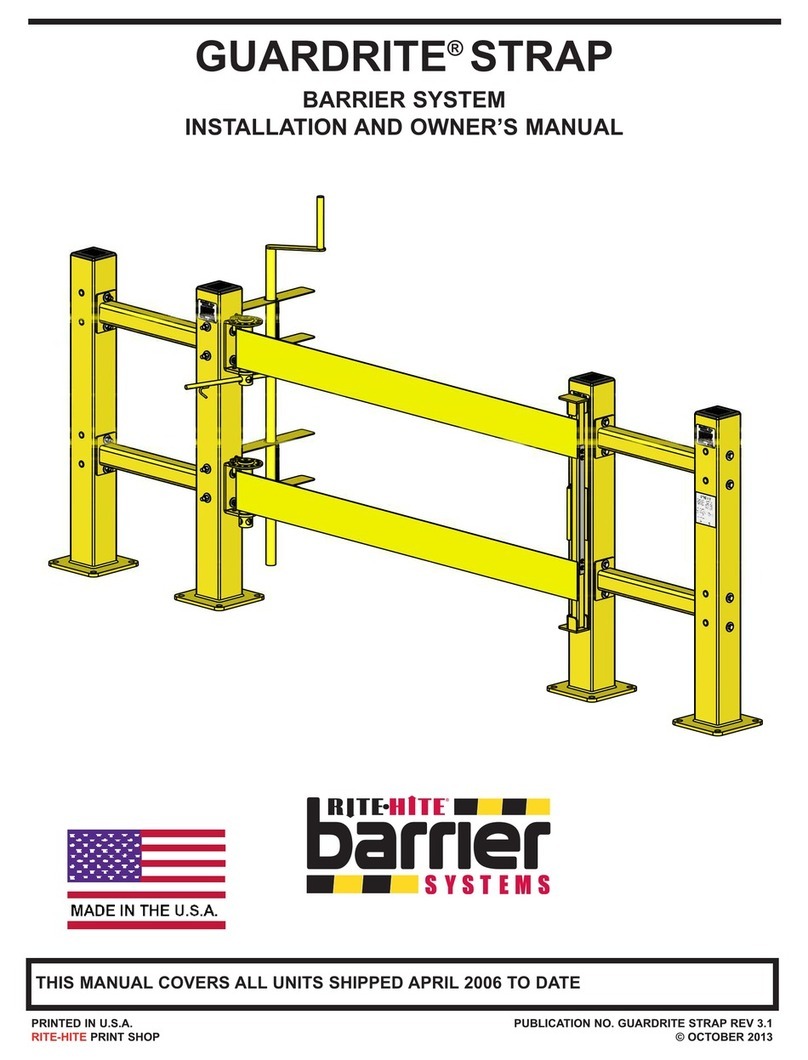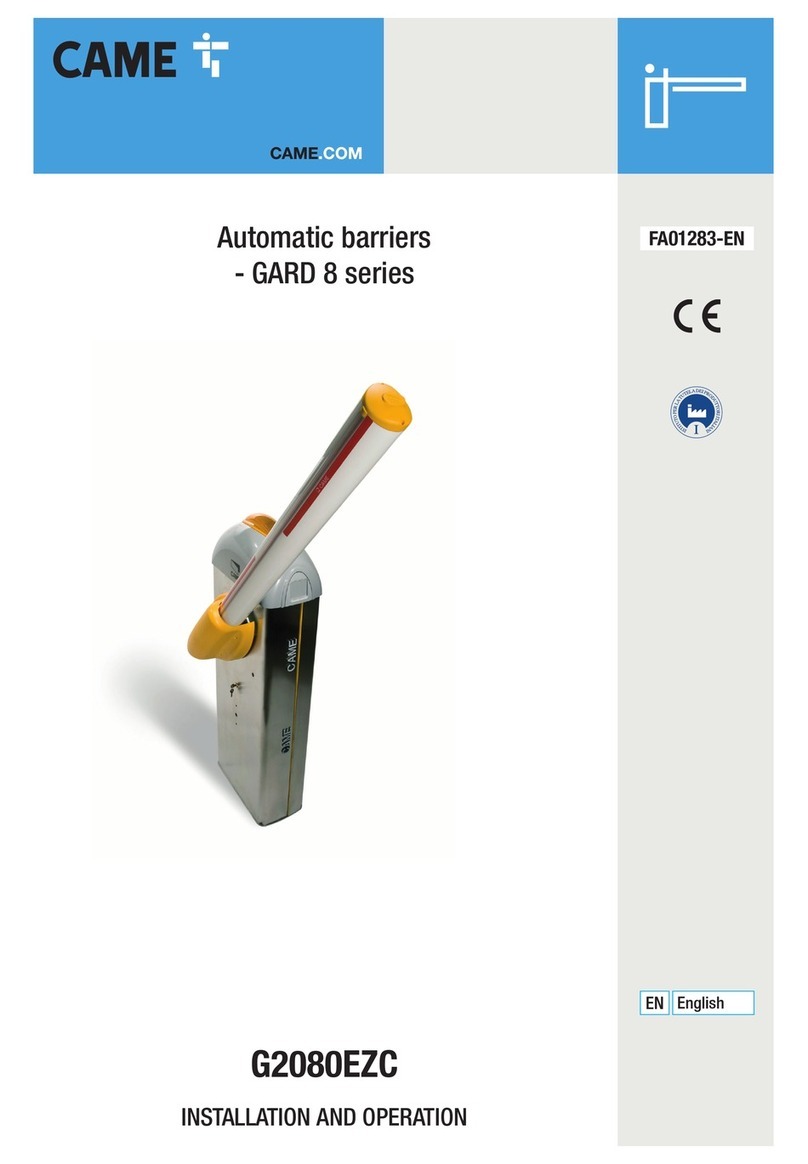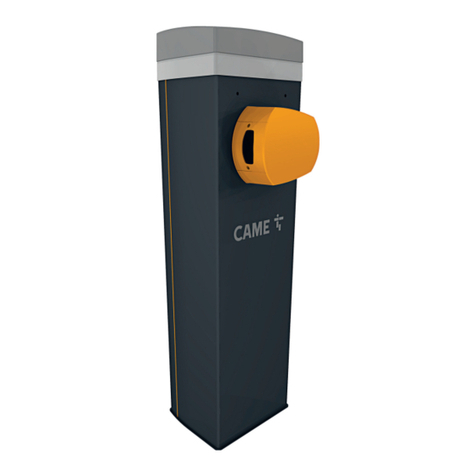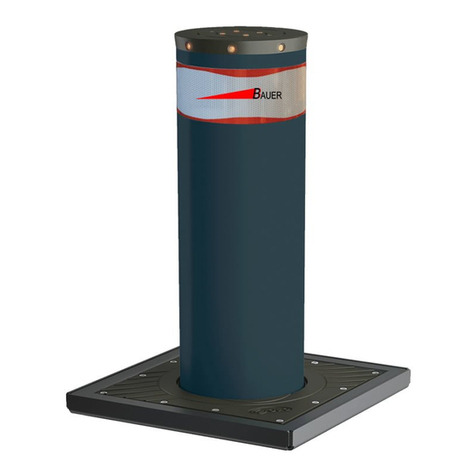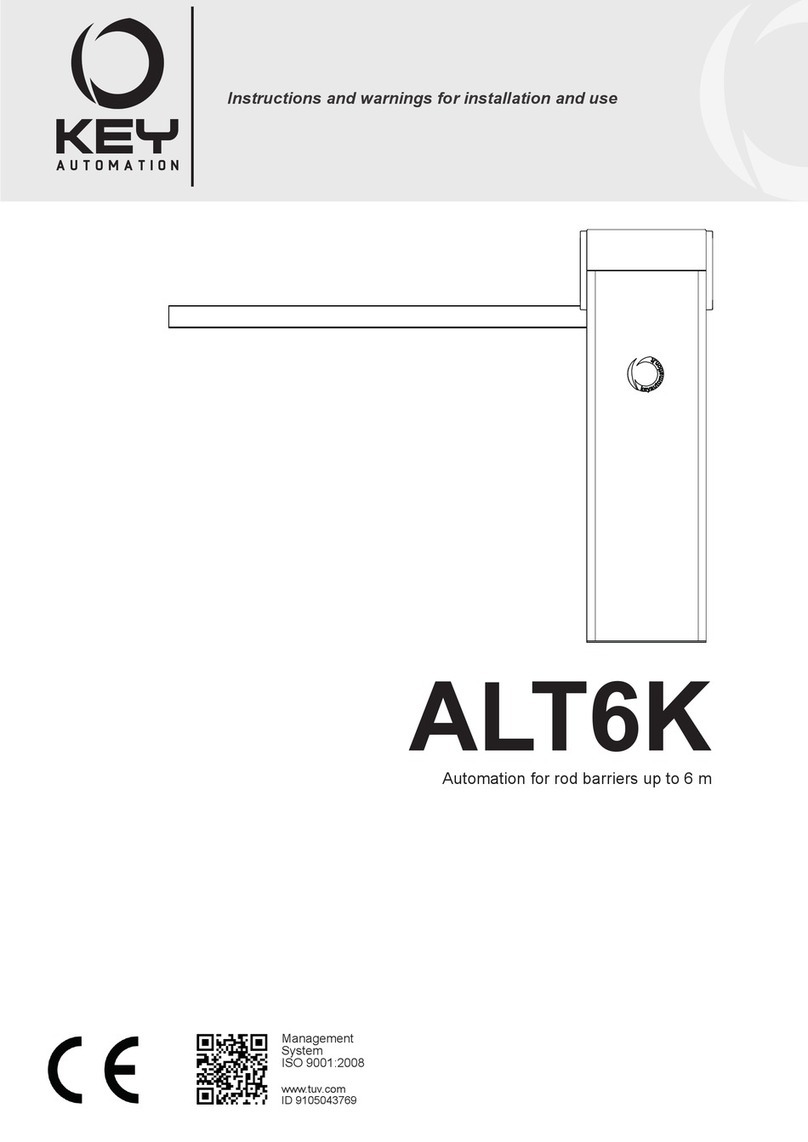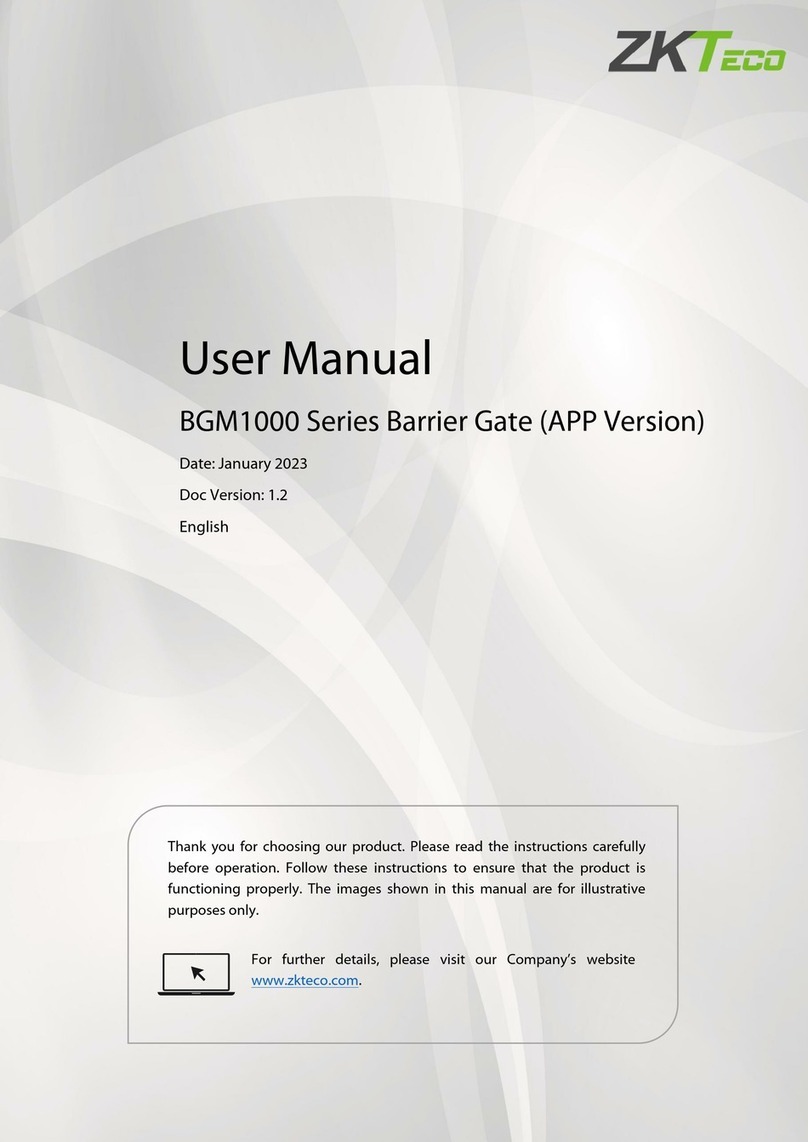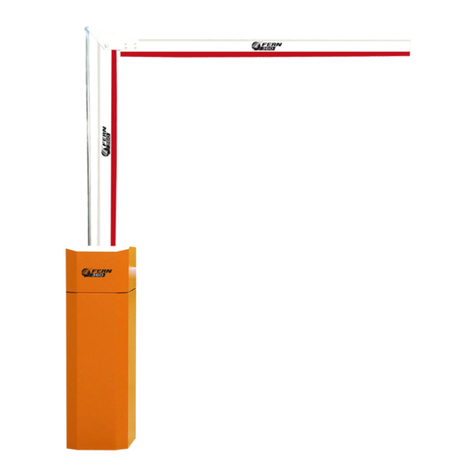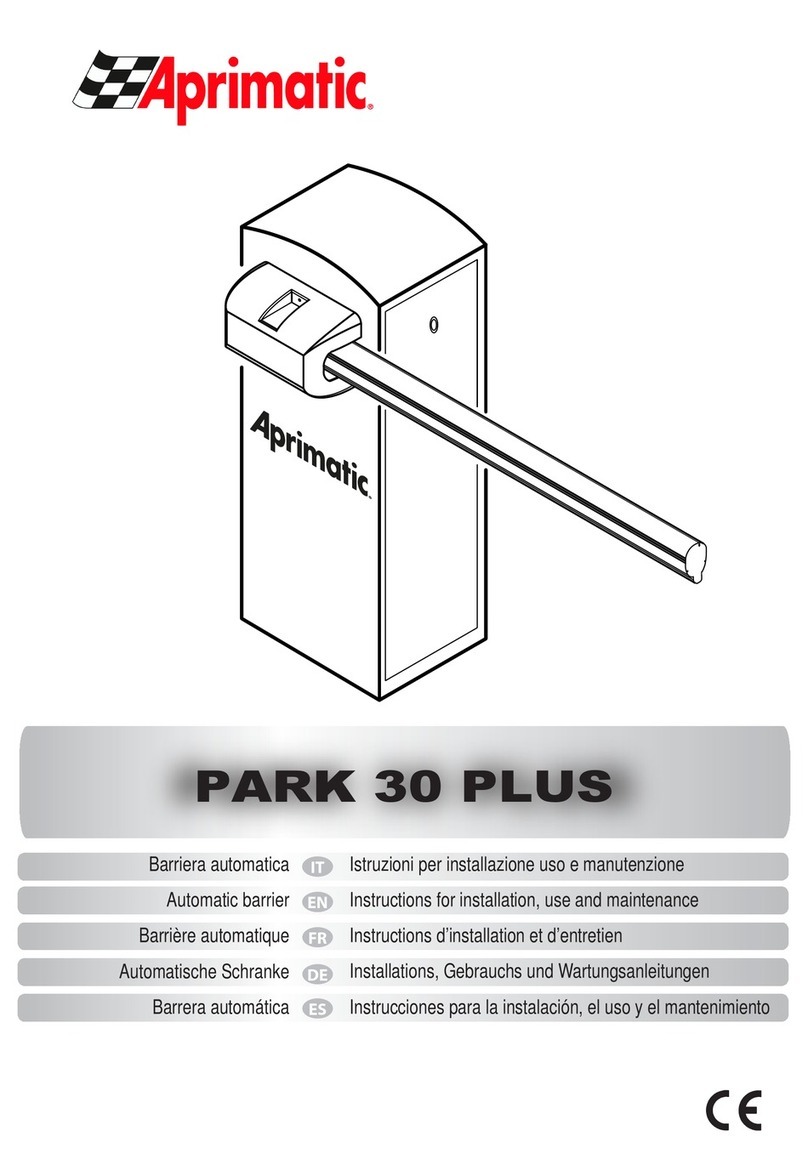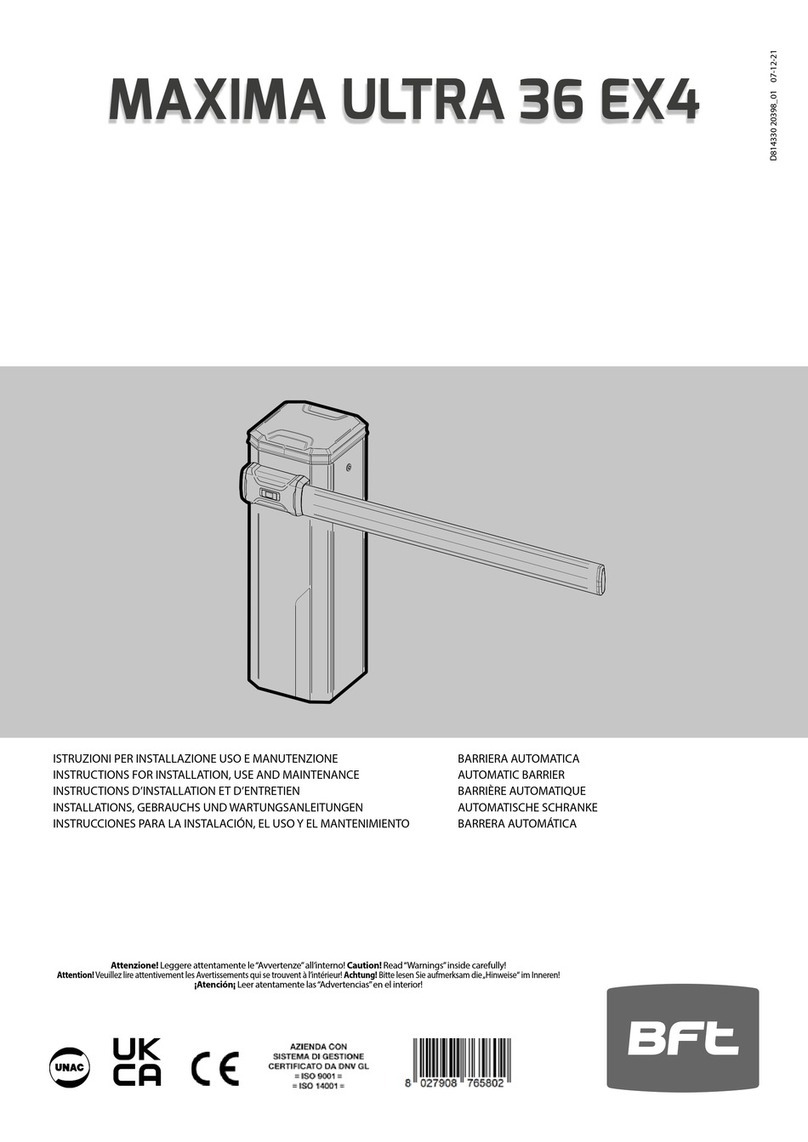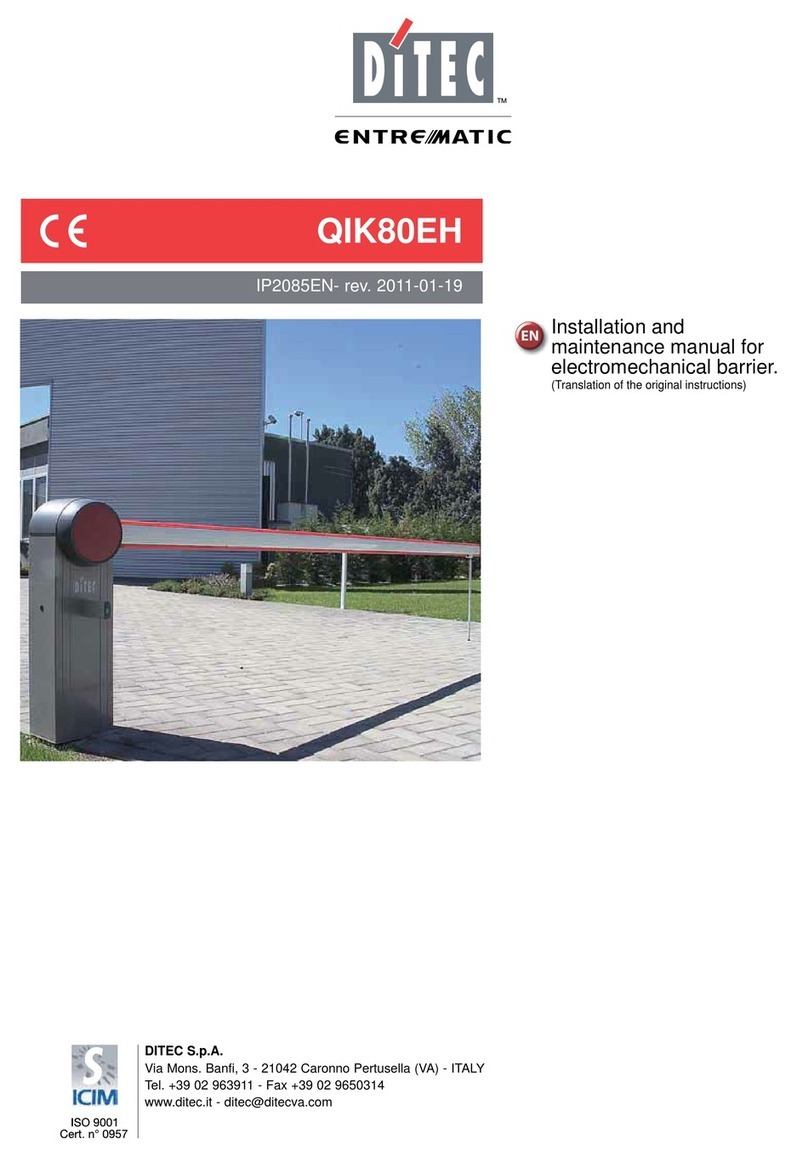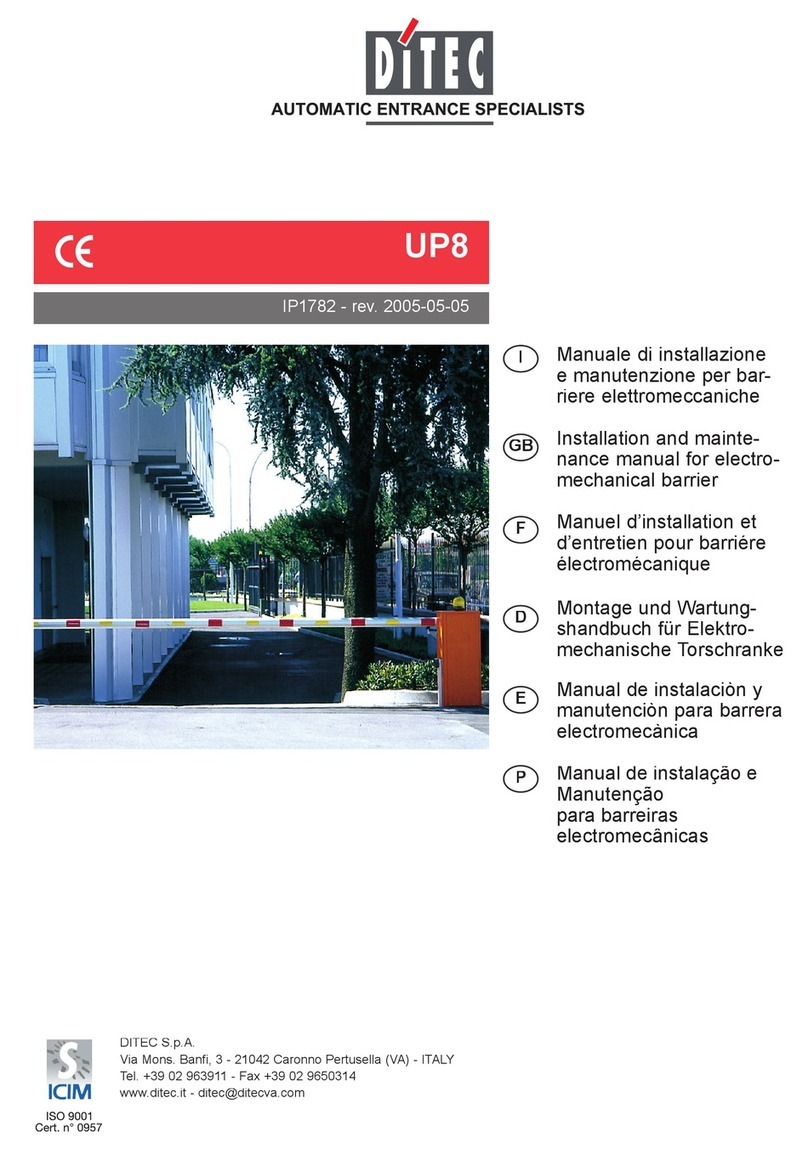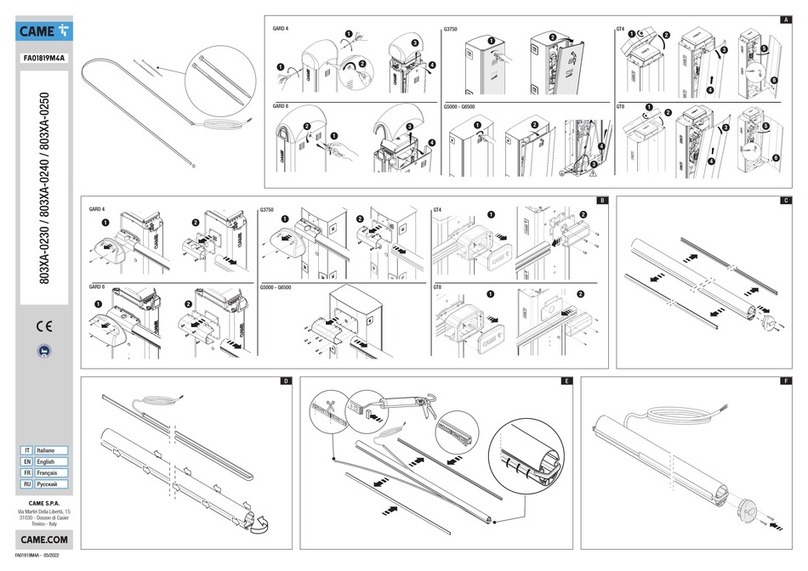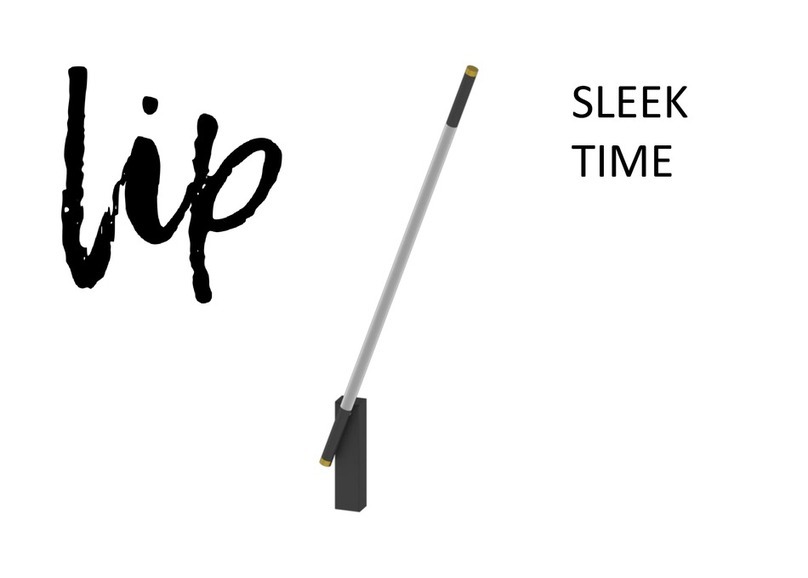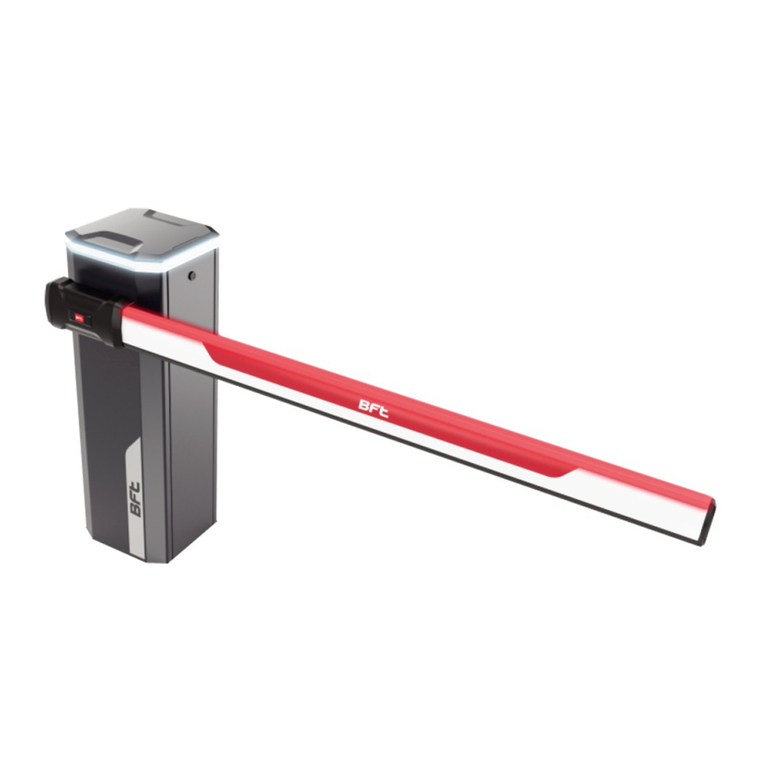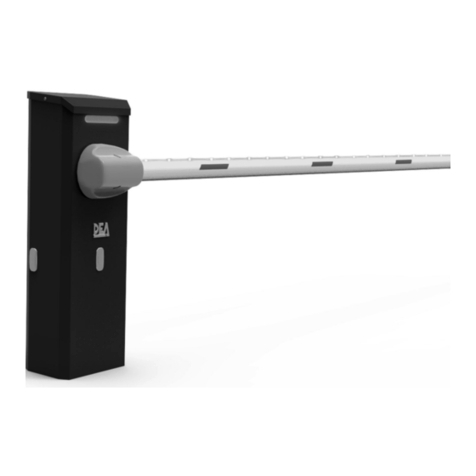
6
DITEC S.P.A - IP1597 - UP4EHS
ITALIANO
AVVERTENZE GENERALI PER LA SICUREZZA
Il presente manuale di installazione è rivolto esclusivamente a personale professionalmente competente. L’installazione,
i collegamenti elettrici e le regolazioni devono essere effettuati nell’osservanza della Buona Tecnica e in ottemperanza alle norme vigenti.
Leggere attentamente le istruzioni prima di iniziare l’installazione del prodotto. Una errata installazione può essere fonte di pericolo.
I materiali dell’imballaggio (plastica, polistirolo, ecc.) non vanno dispersi nell’ambiente e non devono essere lasciati alla portata dei
bambini in quanto potenziali fonti di pericolo.
Prima di iniziare l’installazione verificare l’integrità del prodotto.
Non installare il prodotto in ambiente e atmosfera esplosivi: presenza di gas o fumi infiammabili costituiscono un grave pericolo per la
sicurezza.
Prima di installare la motorizzazione, apportare tutte le modifiche strutturali relative alla realizzazione dei franchi di sicurezza ed alla
protezione o segregazione di tutte le zone di schiacciamento, cesoiamento, convogliamento e di pericolo in genere.
Verificare che la struttura esistente abbia i necessari requisiti di robustezza e stabilità.
Il costruttore della motorizzazione non è responsabile dell’inosservanza della Buona Tecnica nella costruzione degli infissi da motorizzare,
nonché delle deformazioni che dovessero intervenire nell’utilizzo.
I dispositivi di sicurezza (fotocellule, coste sensibili, stop di emergenza, ecc.) devono essere installati tenendo in considerazione: le
normative e le direttive in vigore, i criteri della Buona Tecnica, l’ambiente di installazione, la logica di funzionamento del sistema e le forze
sviluppate dalla porta o cancello motorizzati.
I dispositivi di sicurezza devono proteggere eventuali zone di schiacciamento, cesoiamento, convogliamento e di pericolo in genere, della
porta o cancello motorizzati.
Applicare le segnalazioni previste dalle norme vigenti per individuare le zone pericolose.
Ogni installazione deve avere visibile l’indicazione dei dati identificativi della porta o cancello motorizzati.
Prima di collegare l’alimentazione elettrica accertarsi che i dati di targa siano rispondenti a quelli della rete di distribuzione elettrica.
Prevedere sulla rete di alimentazione un interruttore/sezionatore onnipolare con distanza d’apertura dei contatti uguale o superiore a 3
mm. Verificare che a monte dell’impianto elettrico vi sia un interruttore differenziale e una protezione di sovracorrente adeguati.
Collegare la porta o cancello motorizzati ad un efficace impianto di messa a terra eseguito come previsto dalle vigenti norme di sicurezza.
Il costruttore della motorizzazione declina ogni responsabilità qualora vengano installati componenti incompatibili ai fini della sicurezza e
del buon funzionamento.
Per l’eventuale riparazione o sostituzione dei prodotti dovranno essere utilizzati esclusivamente ricambi originali.
L’installatore deve fornire tutte le informazioni relative al funzionamento automatico, manuale e di emergenza della porta o cancello
motorizzati, e consegnare all’utilizzatore dell’impianto le istruzioni d’uso.
La manipolazione delle parti elettroniche deve essere effettuata munendosi di bracciali conduttivi antistatici collegati a terra.
DIRETTIVA MACCHINE
Ai sensi della Direttiva Macchine (98/37/CE) l’installatore che motorizza una porta o un cancello ha gli stessi obblighi del costruttore di una
macchina e come tale deve:
−predisporre il fascicolo tecnico che dovrà contenere i documenti indicati nell’Allegato V della Direttiva Macchine;
(Il fascicolo tecnico deve essere conservato e tenuto a disposizione delle autorità nazionali competenti per almeno dieci anni a
decorrere dalla data di costruzione della porta motorizzata);
−redigere la dichiarazione CE di conformità secondo l’Allegato II-A della Direttiva Macchine;
−apporre la marcatura CE sulla porta motorizzata ai sensi del punto 1.7.3 dell’Allegato I della Direttiva Macchine.
Per maggiori informazioni consultare le “Linee guida per la realizzazione del fascicolo tecnico” disponibile su internet al seguente indirizzo:
www.ditec.it
DICHIARAZIONE DEL FABBRICANTE
(Direttiva 98/37/CE, Allegato II, parte B)
Fabbricante: DITEC S.p.A.
Indirizzo: via Mons. Banfi, 3 - 21042 Caronno Pertusella (VA) - ITALY
Dichiara che la barriera elettromeccanica UP4EHS
- è costruito per essere incorporato in una macchina o per essere assemblato con altri macchinari per costituire una macchina
considerata dalla Direttiva 98/37/CE, come modificata;
- è conforme alle condizioni delle seguenti altre direttive CE:
Direttiva compatibilità elettromagnetica 89/336/CEE, come modificata;
Direttiva bassa tensione 73/23/CEE, come modificata;
e inoltre dichiara che non è consentito mettere in servizio il macchinario fino a che la macchina in cui sarà incorporata o di cui diverrà
componente sia stata identificata e ne sia stata dichiarata la conformità alle condizioni della Direttiva 98/37/CE e alla legislazione
nazionale che la traspone.
Caronno Pertusella, 09/04/2001. Fermo Bressanini
(Presidente)
INDICAZIONI DI UTILIZZO
· Le prestazioni di utilizzo si riferiscono al peso raccomandato (circa 2/3 del peso massimo consentito). L’utilizzo con il peso massimo
consentito potrebbe ridurre le prestazioni sopra indicate.
· La classe di servizio, i tempi di utilizzo e il numero di cicli consecutivi hanno valore indicativo. Sono rilevati statisticamente in condizioni
medie di utilizzo e non possono essere certi per ogni singolo caso. Si riferiscono al periodo nel quale il prodotto funziona senza
necessità di manutenzione straordinaria.
· Ogni ingresso automatico presenta elementi variabili quali: attriti, bilanciature e condizioni ambientali che possono modificare in
maniera sostanziale sia la durata che la qualità di funzionamento dell’ingresso automatico o di parte dei suoi componenti (fra i quali
gli automatismi). E’ compito dell’installatore adottare coefficienti di sicurezza adeguati ad ogni particolare installazione.
UP4EHS
Classe di servizio Utilizzo
2
(minimo 10÷5 anni di utilizzo con 10÷20 cicli al giorno) LEGGERO (Per installazioni tipo monofamigliare con uso
carraio o pedonale poco frequente)
